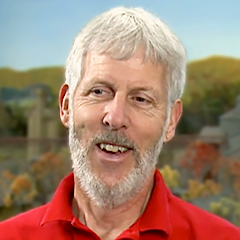
Making Evergreen Model Railroad Trees on Seneca Valley Lines
Tom McCullochPeter Darling is the Chief Engineer of the Rochester Model Railroad Club, and in this video he demonstrates how to take three commercially available materials and turn them into good looking model railroad trees. A material he uses to aid in the construction and storage of the model railroad trees is a Dow product called Tuff R. It’s a honeycomb material with aluminum foil on each side that comes in various thicknesses from half inch to several inches. Peter has found the one inch thickness works very well for tree construction. When trees are completed, they can be mounted in panels, and then put in paper boxes and covered for easy storage.
For the first of the model railroad trees, Peter will demonstrate modifications on a Busch 100 pack. The materials needed will be fine foam, a pair of scissors, and some hairspray. To make the trees less uniform and more realistic, he eliminates the taper by cutting some of the edge off, and then, at a 45 degree angle cuts around the tree before adding the ground foam.
To apply the ground foam, Peter uses the strongest hairspray he can find. He wets the tree with the hairspray and applies the ground foam over a lampshade or some conical device to catch the extra foam. The next of the model railroad trees Peter makes utilizes a product called chenille, which comes in two different lengths. The first step is to cut the chenille into the forms of potential trees. He trims off the bottom so there is a base to stick it into the platform. Following that step, he cuts the trees to remove the uniformity and give it a unique shape and uses hairspray as a fixative for the ground foam.
Watch more from Allen Keller’s Great Model Railroad series from our archives to learn more tree making techniques.

